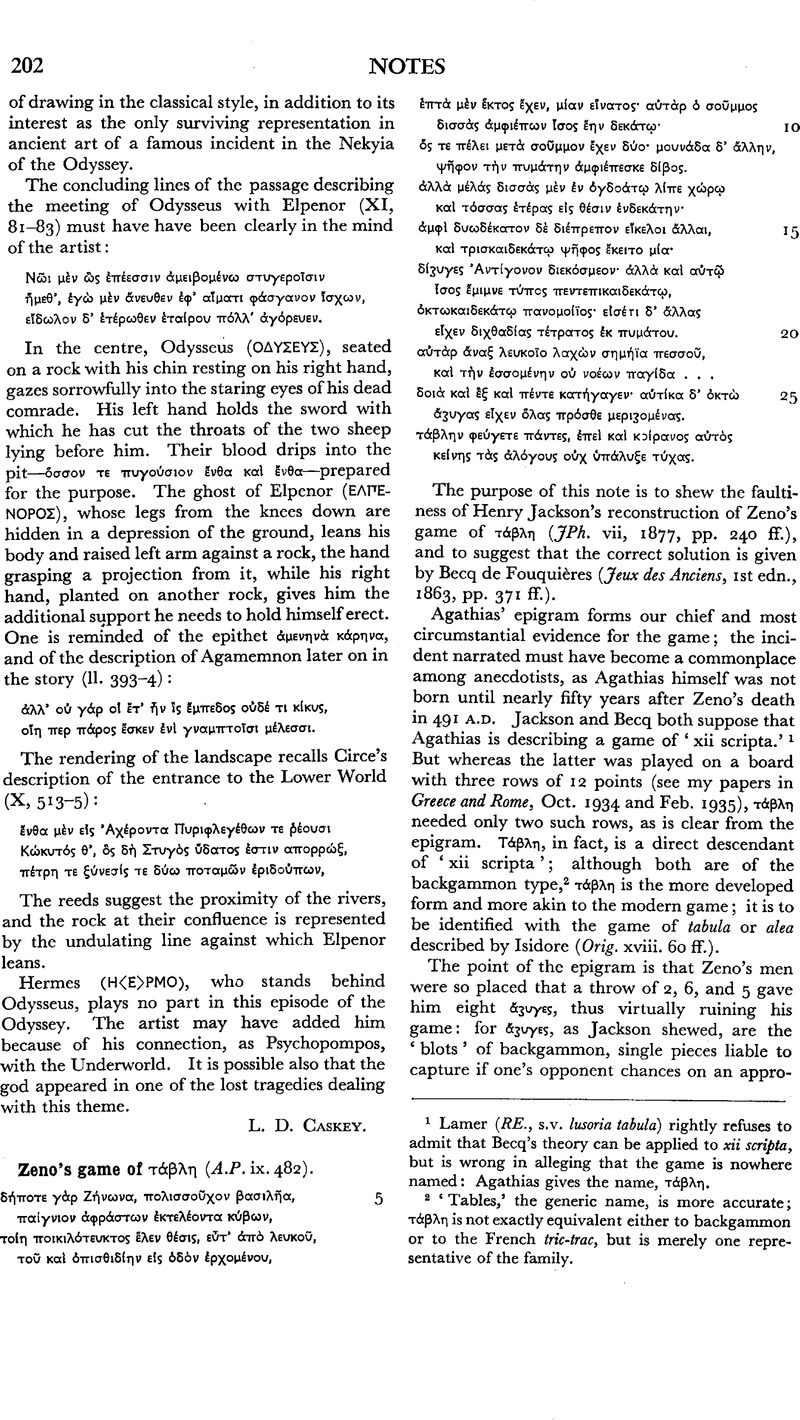Article contents
Zeno's game of τάβλη (A.P. ix. 482).
Published online by Cambridge University Press: 23 December 2013
Abstract

Information
- Type
- Notes
- Information
- Copyright
- Copyright © The Society for the Promotion of Hellenic Studies 1934
References
page 202 note 1 Lamer (RE., s.v. lusoria tabula) rightly refuses to admit that Becq's theory can be applied to xii scripta, but is wrong in alleging that the game is nowhere named: Agathias gives the name, τάβλη.
page 202 note 2 ‘Tables,’ the generic name, is more accurate; τάβλη is not exactly equivalent either to backgammon or to the French tric-trac, but is merely one representative of the family.
page 203 note 1 I cannot understand why δίβος has been equated with divus; surely the quantity alone would prevent this. The word is not mentioned in the old Liddell and Scott; in the new edition it should rather be explained as ‘a point on a backgammon board’ than as ‘a square on a draught board.’ E. A. Sophocles, in his Lexicon of Byzantine Greek, wrongly accents it δῑβος.
page 203 note 2 Because two or more men on any one point make movement impossible to that point by an opponent.
page 204 note 1 Jackson supports his view of the ἄʒυγες by an analogy (itself false) from latrunculi, an utterly different type of game; he further states, wrongly, that the men were originally arranged in threes, an inference from Ovid's account of the game of Merels (A.A. iii. 365), another quite different game.
page 205 note 1 In the earlier xii scripta game the Latin term fo a blot may have been ‘distans’; see Owen, S. G. note on Ovid, , Trist. ii. 475–6Google Scholar.
- 8
- Cited by

